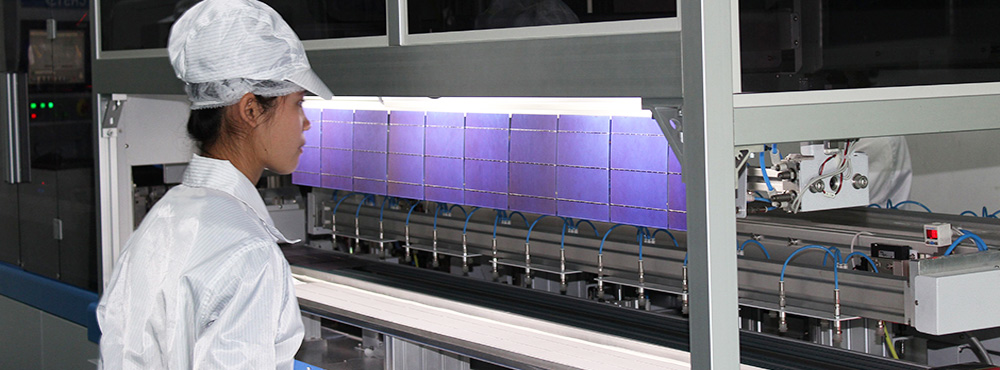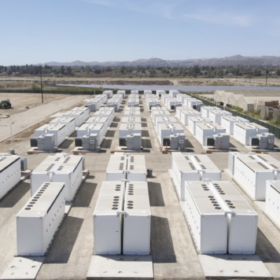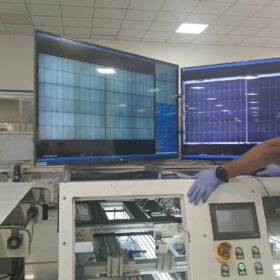The ninth annual International Roadmap for Photovoltaics (ITRPV), published today by the VDMA – the German production equipment industrial association – has revealed that global PV module production capacity exceeded 130 GWp at the end of 2017, with utilization rates above 80%.
Market share among the module technologies sees a continuation of the 90/10 split in favor of c-Si against thin film, while the price experience curve increased slightly to 22.8% as the industry continued its ‘historic learning’ of delivering sustained cost reductions allied to increased average power.
The 9th ITRPV therefore charted a slowdown in the pace of cost reduction in 2017 compared to the year prior, but an increase in the scale and volume of the market.
This movement was shaped by the industry’s ability to link cost reduction measures with the implementation of enhanced cell concepts, achieved via improved c-Si wafers, improved cell front and rear sides, refined layouts, and superior module technologies.
The ITRPV expects such incremental improvements to yield 60-cell modules with an average power output of 325 W for multicrystalline, and 345 W for p-type monocrystalline, by 2028. For larger modules comprising 72 cells, the average power output is expected to reach 390 W for multi, and 415 W for p-type mono over the same timeframe.
The PV learning curve
The latest data points on PV production and module costs reaffirm the notion that for every doubling of cumulative PV shipments, module ASPs decrease according to the learning rate, which in 2017 was 22.8% – up slightly from 22.5% in the 8th ITRPV.
Shipments calculated in 2017 by the ITRPV stand at 105 GW, which is 6 GW above the estimated 99 GW of installation for last year. This additional volume of 6 GW was estimated to have been shipped to U.S. warehouses ahead of the Section 201 trade case.
Module prices at the end of 2017 were calculated at $0.34/Wp, down from $0.37/Wp in 2016. Cumulative installed PV capacity stood at 402 GW at the end of last year.
Movement on cost
The ITRPV describes last year’s module cost reduction as ‘smooth’ when placed in comparison with 2016’s “tremendous price erosion” that characterized H2 in particular. Cell production capacity was tracked as lower than module production capacity – 110 GWp versus 130 GWp – as capacity expanses accelerated in 2017.
Should such a pace of module production capacity growth continue in 2018, the ITRPV warns that a critical oversupply situation may occur. The impacts of this are mitigated somewhat by China’s self-consumption of its own modules, but global market growth cannot be guaranteed to be of a sufficient or sustained level to consume the remaining capacities.
In terms of material costs, there was relatively flat movement over the course of 2017, decreasing just 9% between January and December last year (compared to 40% over a 24-month period between 2016 and 2017), with the share of different price elements (for silicon, wafer, cells and modules) remaining almost constant. For multicrystalline silicon, the price fraction is around 23% of the module cost, which is up from 12% in 2016.
The ITRPV concludes that because production capacity will likely exceed installation in 2018, prices will not compensate for any cost increases because no shortage is to be expected. Hence, downward price pressure will persist, meaning more cost reductions will have to be found elsewhere in the value chain, and improvements in production efficiency will become more vital.
Three strategies that the ITRPV suggests could help to mitigate the anticipated price pressures on module producers include:
- The continued cost reduction per piece along the entire value chain by increasing the overall equipment efficiency (OEE) of installed production capacity by using raw materials more efficiently;
- The introduction of specialized module products for different markets, ie, a customized approach;
- And improving module power/cell efficiency without significantly increasing processing costs.
That final bulletpoint would necessitate module makers implementing leaner processes with minimum upgrade expenditure in tooling or machinery. One suggestion would be to extend the service life of depreciated tool sets. The ITRPV also admits that it will “remain difficult to introduce new, immature technologies” that do not yield immediate cost-per-Wp price reductions.
You can read the full report here.
This content is protected by copyright and may not be reused. If you want to cooperate with us and would like to reuse some of our content, please contact: editors@pv-magazine.com.








By submitting this form you agree to pv magazine using your data for the purposes of publishing your comment.
Your personal data will only be disclosed or otherwise transmitted to third parties for the purposes of spam filtering or if this is necessary for technical maintenance of the website. Any other transfer to third parties will not take place unless this is justified on the basis of applicable data protection regulations or if pv magazine is legally obliged to do so.
You may revoke this consent at any time with effect for the future, in which case your personal data will be deleted immediately. Otherwise, your data will be deleted if pv magazine has processed your request or the purpose of data storage is fulfilled.
Further information on data privacy can be found in our Data Protection Policy.